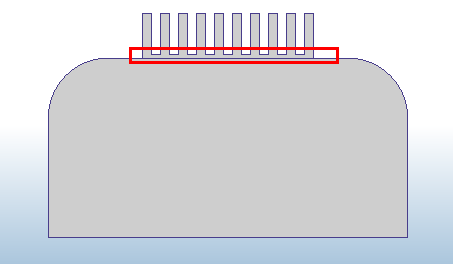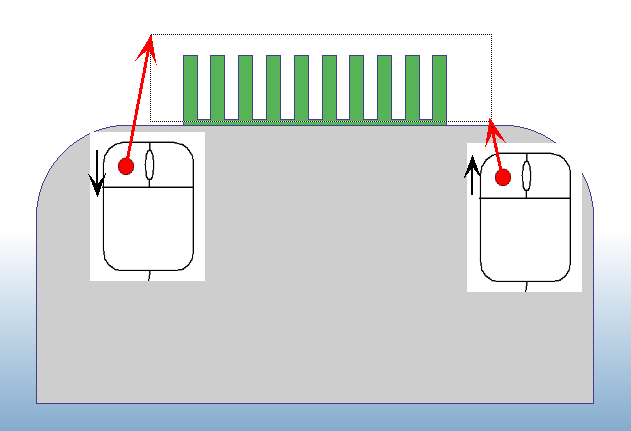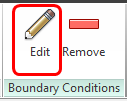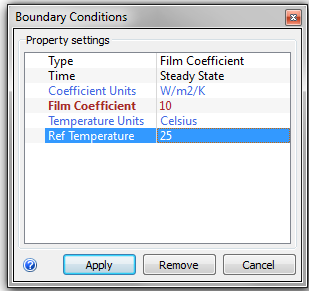Assign Film Coefficient (Convection) Boundary Condition to Exterior Surfaces
A film coefficient (convection) boundary condition simulates exposure to external flow, without actually modeling the air that surrounds it. A higher value of film coefficient would be used to simulate a forced convection situation.
Applying this condition is a little tricky because we need to apply it to all exterior surfaces (including those on the heat sink). The time consuming way is to manually select them. An easier way is to use the "Rubber-band" selection to select all of the surfaces of the heat sink at the same time. The remaining surfaces can then easily be selected manually.
Click Top on the ViewCube:

Select XY (Front) from the Standard Views list.

If not, click View > Perspective, and select Orthographic

Set the Selection Mode to Surface from the Setup tab:

Position the mouse slightly above and to the left of the heat sink. Hold down the left mouse button, and drag the mouse to the right of the heat sink, just below the air gap between the fins, and release the mouse button. (Do not release the mouse button below the heat sink.)

Select the other exterior surfaces of the case

Open the Boundary Conditions quick edit dialog in ONE of the following ways:
- Click Edit from the context toolbar:

- Click Edit from the Boundary Conditions context panel:

Type = Film Coefficient
Coefficient Units = W/m2/K
Film coefficient = 10
Temperature Units = Celsius
Ref Temperature = 25

Click Apply.